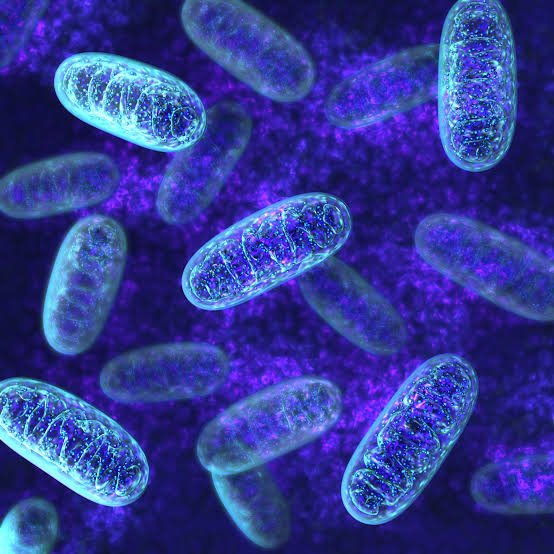Mitochondria - Health & Diseases
Mitochondria are tiny structures inside cells that likely originated from bacteria and evolved to become a crucial part of eukaryotic cells. They are often called the "powerhouses" of the cell because they produce most of the energy (in the form of ATP) that cells need to function. In addition to providing energy, mitochondria help regulate various important processes in the cell, like maintaining ion balance, supporting cell growth, controlling oxidative stress, and managing cell communication. They play a key role in deciding whether a cell lives or dies. Because of these functions, mitochondria are involved in many diseases and health conditions, such as cancer, neurodegenerative diseases (like Alzheimer’s or Parkinson’s), heart disease, diabetes, brain injuries, and inflammation. They influence disease progression through various cell-signaling pathways and cellular processes.
Mitochondria in Health
Mitochondrial homeostasis: Mitochondria need to balance creating new mitochondria (biogenesis) and breaking down damaged ones (mitophagy) to keep both themselves and the host cell healthy. To prevent too much breakdown, they have built-in ways to maintain their quality. In a separate study, researchers looked at how mitochondria protect themselves during stress caused by high levels of calcium (Ca2+), which is also related to their self-preservation.
Mitochondrial and cellular metabolism: In healthy cells, mitochondria are mainly responsible for producing energy (ATP) through a process called oxidative phosphorylation (OXPHOS). In heart cells (cardiomyocytes), most of the fuel used comes from fatty acids, with some also coming from pyruvate, a product of glucose breakdown. Fatty acids help control energy production by making the ADP/ATP transporter more efficient at moving ADP into the mitochondria, where it is converted into ATP. This study sheds light on how energy production changes with age-related heart diseases.
Cardiovascular diseases are more common as people age and can affect the entire body. Telomeres, which are protective caps on the ends of chromosomes, and the enzyme telomerase, which helps maintain them, play a key role in how cells age. A research paper highlights the growing interest in how telomere length and telomerase influence heart development, aging, and healing. It also explores the role of mitochondria, the energy-producing parts of cells, in this process. The paper suggests that by understanding how the heart can regenerate, new treatments for heart conditions like heart attacks and heart failure can be developed.
Interaction between Mitochondria with other cell organelles
Mitochondria form a complex network, connecting not only with each other but also with other parts of the cell, like the nucleus and the cell's structural framework (cytoskeleton). These interactions are essential for mitochondria to work well and help the cell survive. The link between mitochondria and the nucleus allows the cell to respond efficiently to internal changes. Interestingly, some researchers have suggested that small pieces of mitochondria might even be present inside the nucleus, which was a surprising idea when first proposed and met with skepticism. However, some later studies found that when fragments of mitochondria are seen in the nucleus, it might be a sign of disease.
The research paper explains how certain proteins in cells, called cytoskeletal proteins, help organize mitochondria inside the cell and control how they interact with other parts of the cell. These proteins also regulate how mitochondria function, especially in producing energy (ATP), which is essential for cell survival. Even though the mitochondrial genome only contains 13 genes responsible for energy production, it also produces RNA molecules. When these RNAs are released into the cell, they can affect how the cell works. The review highlights recent discoveries about these mitochondrial RNAs, including a type called long non-coding RNAs, and how they play new roles in regulating cell functions. These newly discovered gene regulators give mitochondria more ways to impact how cells operate.
Mitochondrial ion channels: In mammals, a type of potassium channel called the mitochondrial KCa channel helps control how mitochondria function and can protect cells from damage. A study by Gururaja Rao and colleagues was the first to find a similar channel, known as the BKCa (Slo) channel, in the mitochondria of fruit flies. When the slo gene was mutated, it led to higher levels of reactive oxygen species (ROS), which could reduce the flies' survival and lifespan. Interestingly, when the human version of the slo gene was introduced into the flies, their survival improved, and their lifespan increased. This research gives us new insights that could help us better understand aging-related diseases and their causes.
Mitochondria in Diseases
Mitochondrial problems have recently been linked to many human diseases, making mitochondria an important target for developing new treatments for a wide variety of diseases. These diseases are:
- Neurological disorders
- Liver diseases
- Diseases associated with oxygen deficiency
- Inborn and metabolic diseases









Comments
Post a Comment